Most gardeners and large-scale farms prefer the promising Centurion onion variety for low maintenance, high-quality crops and a long shelf life.
A widespread vegetable crop belongs to the mid-early varieties of Dutch selection. There is a reliable hybrid, and shows excellent results of germination.
Table of contents
Description and characteristics of onion grade centurion
Let's start with a description of the variety. The plant reaches a height of 80 cm and has tubular leaves.painted in rich green. The variety forms medium sized heads. The weight of one onion ranges from 100 to 150g. The bulb is round, slightly elongated with dense husks having a bright straw color. A small neck creates a reliable barrier from the penetration of pathogenic microbes into the white flesh, which protects the onions from rotting.
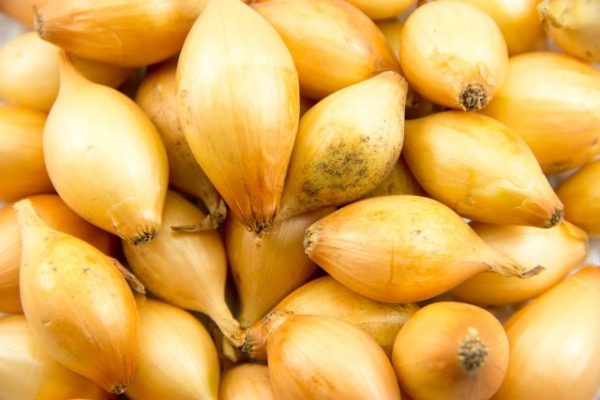
Due to its shape, a small bottom and a narrow neck, the vegetable is convenient for cutting, unlike other types that have a spherical shape, which produce a lot of waste. And the taste of the product, which is characterized by mild sharpness, piquancy and delicate aroma, absolutely satisfies the demands of the chefs.
Benefits
The variety has a lot of advantages, because of which it is of particular interest to vegetable growers. The positive characteristics include:
- high yield, from 1m2 plantings can be collected from 4 kg of turnips;
- successful growth in different climatic zones;
- excellent taste qualities of the variety;
- resistance to bolting, so the variety is well suited for growing on a feather;
- resistance to diseases characteristic of this variety, because of this, it does not need additional treatment with the use of chemicals;
- well suited for long-term storage at home;
- a product of universal purpose, is used both fresh, and is suitable for canning.
The peculiarity and characteristic of the variety allows the Centurion to enter the highest price category, which guarantees a decent profit in commercial cultivation.
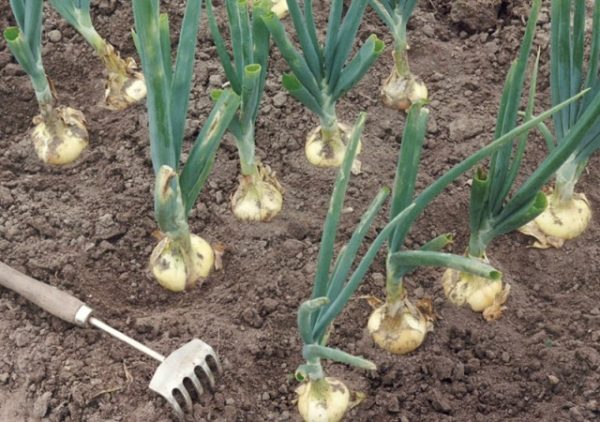
Landing time
When building this variety, it is important to correctly determine the timing of planting.because a very early planting can subject the vegetables to freezing, and a later one will not allow the bulbs and the pen to fully develop.
The main condition is that the soil warms up to 15̊ C and, if it is not observed, the harvest may be small.
Soil requirement
When choosing a site for disembarkation, it is necessary to pay attention to open and well-lit areas. Although the culture and moisture-loving, but an excessive amount of water can not tolerate, so you should avoid placeswhere groundwater flows close to the ground.
For Centurion, sandy soils are best suited. The level of acidity should be neutral, as the acidic soil leads to a significant loss of yield. To reduce the acidity, you can make furnace ash or cement dust a year before planting.
The soil should be prepared in the autumn, following the following agricultural practices:
- Clear the selected area from weeds, as they negatively affect the quality and quantity of the crop.
- Add fertilizer, loosening while the top layer of soil. This will help the nutrients to get deeper, as well as further eliminate weed residues;
- Before the winter period to dig up the beds to a depth of about 25 cm.
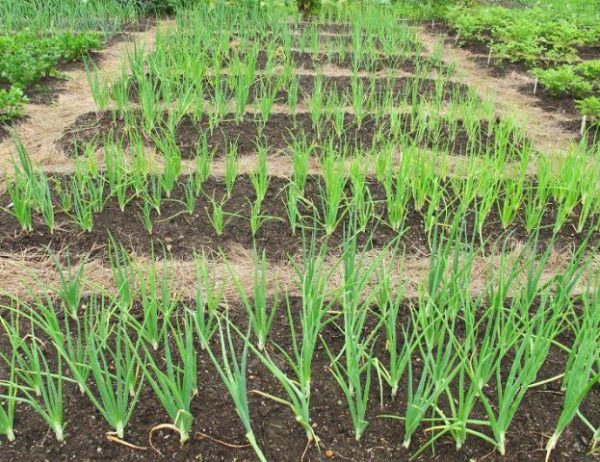
Sowing rules
Record yields can be obtained with a two-year growing scheme.
Features of growing in the first year
A favorable period for sowing seeds is the end of April - the beginning of May.The sowing process includes the following procedure:
- Soak the seeds in water for 24 hours before sowing. You can add growth stimulants to water. Then put the seeds on the matter and cover with foil.
- Prepare sowing furrows 3-4 cm deep, keeping a distance of 20 cm between them.
- Equip the bottom of the furrow with fertilizers and evenly place planting material at the rate of 3g seeds per 1m2.
- Top up loose soil and slightly compacted.
The yield of sev can exceed 15 tons per 1 hectare. Sevok can be removed for 90 days after sowing. After that, it must be prepared for storage and placed in winter in a specially designated room with an acceptable temperature and humidity level.
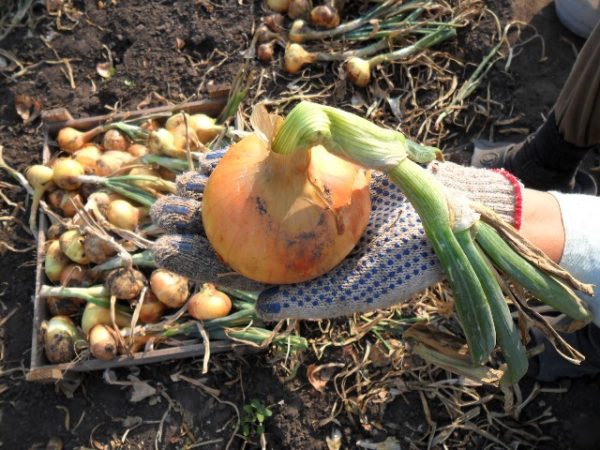
Basic rules for the second year of growing
Beforehand, it is necessary to sort out the sets, removing the damaged and rotted copies. After that, warm the selected onions for planting under cover for 3 days and proceed to the planting process of planting.
- Make landing holes, the depth of which is 6-8 cm. The distance between the rows should be within 10-12cm.
- Introduce organic matter, which can serve as rotted manure, wood ash.
- Place the sets with a distance of 8 cm from each other in the prepared holes.
- The holes are covered with earth and lightly tamped.
A set of activities for the care of onions
When growing any vegetable crop, not only proper planting is important, but also further care, which must be done according to the rules. For this you need:
- To conduct regular watering during the growing season. to enhance the growth of leaves, which by the end of vegetative growth to reduce, and 3 weeks before harvesting completely stop. Watering should be carefully without damaging the pen. Apply only warm water, as cold can cause the appearance of downy mildew.
- Do weeding along with loosening land to ensure good ventilation, it has a positive impact on the development of vegetable culture;
- In due time clean weed crops since they contribute to the preservation of moisture on the surface, which leads to an increased risk of resistance to various fungal diseases. Also, if you do not destroy the weeds in time, the neck will become juicy and this will negatively affect the storage of the vegetable, as it starts to rot.
- Make nutrients depending on the soil in which the onion is planted.
- Constantly inspect plants for diseases and pests. and when detected to carry out relevant activities.
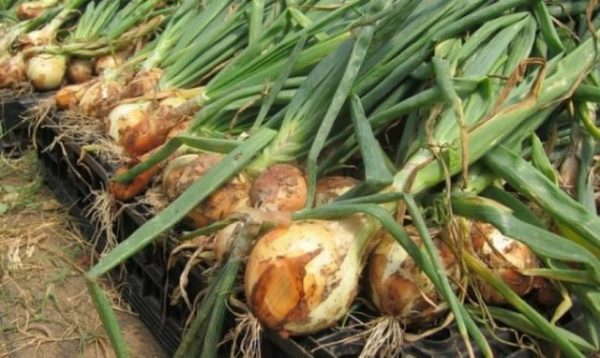
Diseases and their prevention
The most common pest of onion variety Centurion is an onion fly. When it is exposed, the leaflets are incapable of such a process as turgor and, turning yellow, curl. It is necessary to get rid of the pest as soon as possible, as it affects not only the leaves, but also the stalk with seeds. There are many folk remedies and chemicals that are actively used in the fight against onion flies.
An onion moth, small brown butterflies can also be a dangerous pest. The harm is more brought not by adult organisms, but by the larvae that eat away the parenchyma of the plant. In order to prevent the need to regularly weed the beds, and rationally distribute the culture of sowing. PWhen treating onions, substances are used whose smell repels insects. It can be either a chemical purchased in a store or prepared in the home.
Wet spring with low temperatures provokes the appearance of downy mildew. Since rainwater accumulates on the leaves of onions and accelerates the development of fungal diseases, the appearance of which can infect the whole bed in just a few days. For prophylaxis and treatment, fungicides should be used every 2 weeks.
A very dangerous bacterial disease of Centurion onions is ground rot, which enters the plant through contaminated soil and is accompanied by complete decay of the plant.. You can get rid of the disease only by using special means.
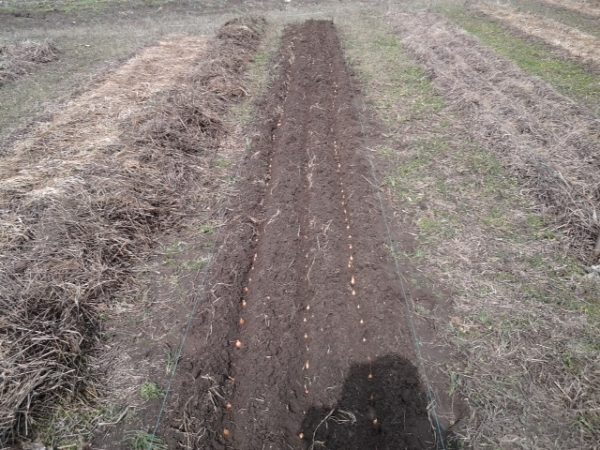
Harvesting and storage rules
With professional fit and proper care, you can easily achieve the desired results. The period of gathering onions comes at a time when the leaves fall, and the neck is not able to hold them evenly.
Hand a few weeks before harvesting you need to stop watering and dry the soil a little. Cut the bulbs neatly, without damaging the bottom.Before cleaning for storage, you should carefully consider each bulb and all suspicious specimens to be put aside for first use.
Subject to the required conditions, the storage period can be up to 8 months. It is important that the room in which the vegetables are placed is dark, cool and dry.
Onion Centurion surprises with its savory taste, which makes it a popular and sought-after product in the preparation of culinary masterpieces. If you comply with all agrotechnical methods for the construction and implementation of the necessary recommendations for the care, you can collect an excellent crop of large onions.
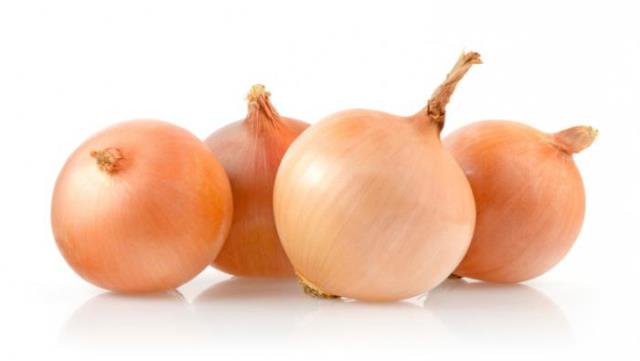
This is an excellent variety of onions, it shows itself well in spring and winter planting.